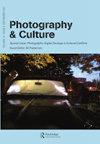Photography and Environmental Activism: Visualising the Struggle Against Industrial Pollution
IF 0.3
4区 艺术学
0 ART
引用次数: 1
Abstract
The hydraulic mining pioneered by The North Bloomfield Mining & Gravel Co at Malakoff Diggins, California was environmentally devastating. So much so that in 1878, farmers downstream mobilized. Organized under the The Anti-Debris Association, they sued The North Bloomfield Mining & Gravel Co. for damaging their farms and livelihood. To provide evidence of the debris and flooding, they hired John A. Todd to photograph the environmental impacts of hydraulic blasting. Todd’s photographs were submitted as evidence in the court case. The decision in Edward Woodruff vs. North Bloomfield [1884] determined that the mine should be shut down, resulting in the first environmental legal decision issued in the United States. In Photography and Environmental Activism: Visualising the Struggle Against Industrial Pollution, Conohar Scott argues that the deployment of Todd’s photographs in EdwardWoodruff vs. North Bloomfield reflects the emergence of environmentally activist photography. Scott does not suggest the photographs were pivotal to the decision—they augmented 200 witness testimonials and 200,000 documents. The value of the images as evidence, though, was rooted in the perceived indexical nature of photography. Formally, the images draw on pictorial framing devices, but critically, for Scott, the images were annotated with “ascriptions of blame” (41). Textual descriptions aligned with witness testimony and moved the photographs beyond mere illustration. Scott’s analysis of Todd’s little-known photographs nuances our understanding of photography’s role in the context of mining at Malakoff Diggins. Carleton Watkins documented the mining operation a decade before but rendered mining aesthetic through skillful framing, suitable for pictures commissioned by North Bloomfield to encourage capital investment. Photography thus “cut both ways”; still, Scott argues that Todd’s case study reveals that “an alternate history of the medium exists in摄影与环保行动:与工业污染作斗争的视觉化
北布鲁姆菲尔德矿业和砾石公司在加利福尼亚州马拉科夫迪金斯开创的水力采矿对环境造成了破坏。以至于1878年,下游的农民动员起来。他们由反碎片协会组织,起诉北布鲁姆菲尔德矿业和砾石公司破坏了他们的农场和生计。为了提供碎片和洪水的证据,他们聘请约翰·A·托德拍摄水力爆破对环境的影响。托德的照片被提交作为法庭案件的证据。Edward Woodruff诉North Bloomfield案【1884年】中的裁决决定关闭该矿,从而产生了美国发布的第一个环境法律裁决。在《摄影与环境激进主义:对抗工业污染的斗争》一书中,Conohar Scott认为,在Edward Woodruff诉North Bloomfield一案中使用Todd的照片反映了环保激进主义摄影的出现。斯科特并不认为这些照片对这一决定至关重要——它们增加了200份证人证言和20万份文件。然而,这些图像作为证据的价值植根于摄影的指数性。从形式上讲,这些图像是用画框装置绘制的,但关键的是,对斯科特来说,这些图像被注释为“指责的归属”(41)。文本描述与证人证词一致,使照片超越了单纯的插图。斯科特对托德鲜为人知的照片的分析细微地改变了我们对摄影在马拉科夫迪金斯矿业背景下的作用的理解。Carleton Watkins在十年前记录了采矿作业,但通过巧妙的装帧呈现了采矿美学,适合North Bloomfield委托拍摄的照片,以鼓励资本投资。摄影因此“双管齐下”;尽管如此,斯科特认为托德的案例研究揭示了“媒介的另一种历史存在于
本文章由计算机程序翻译,如有差异,请以英文原文为准。
求助全文
约1分钟内获得全文
求助全文

 求助内容:
求助内容: 应助结果提醒方式:
应助结果提醒方式:


